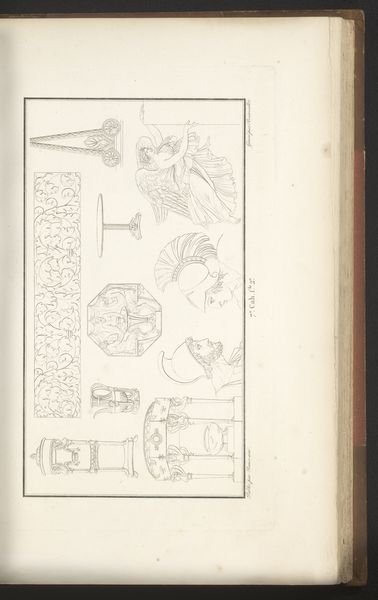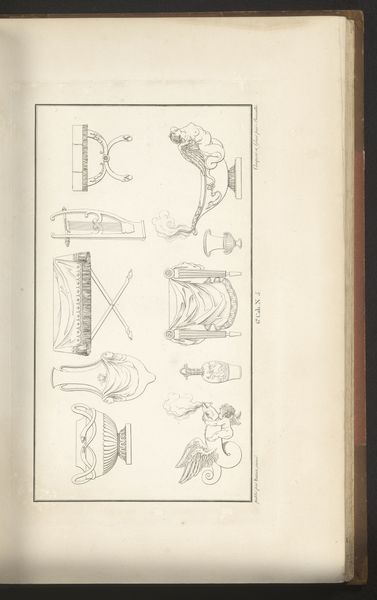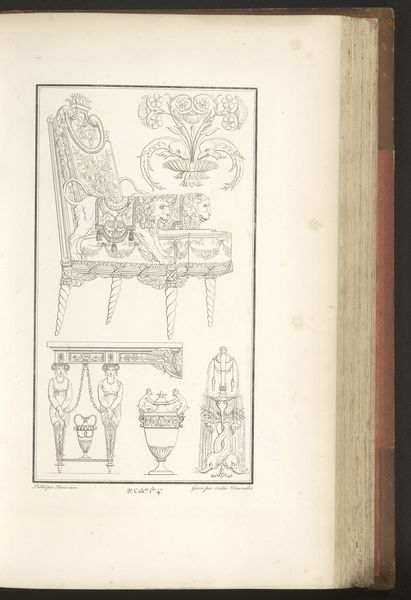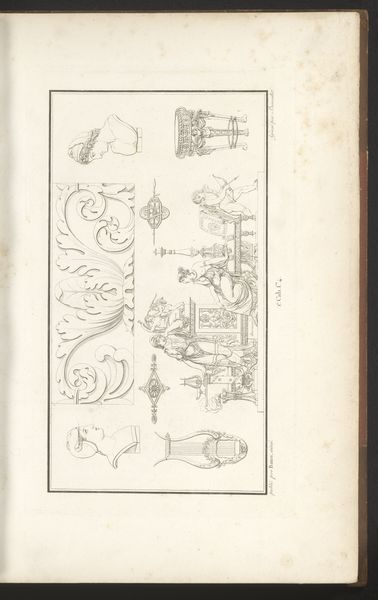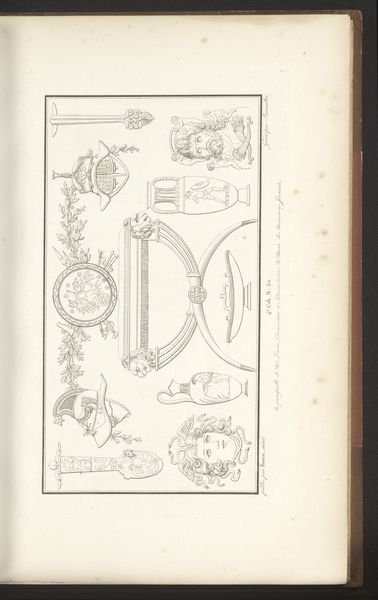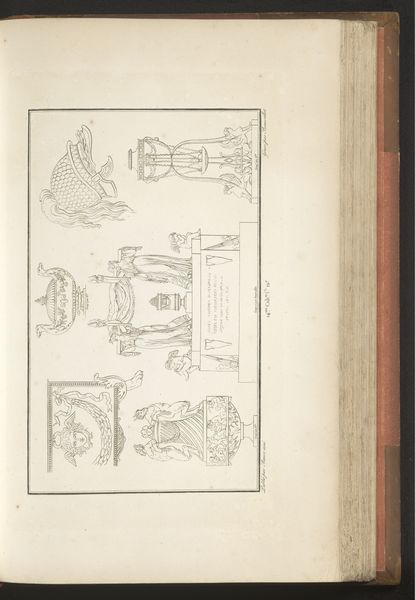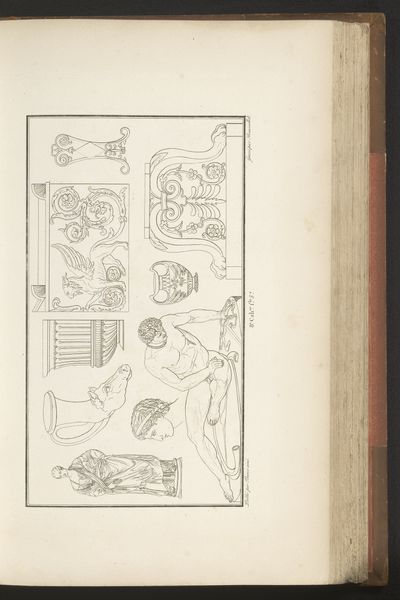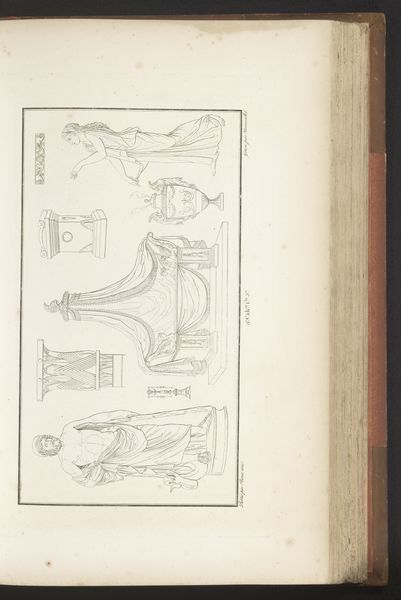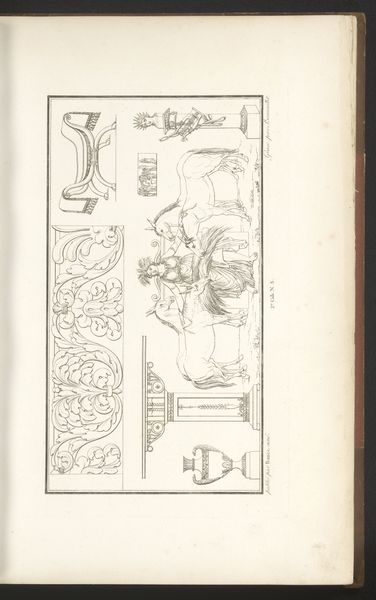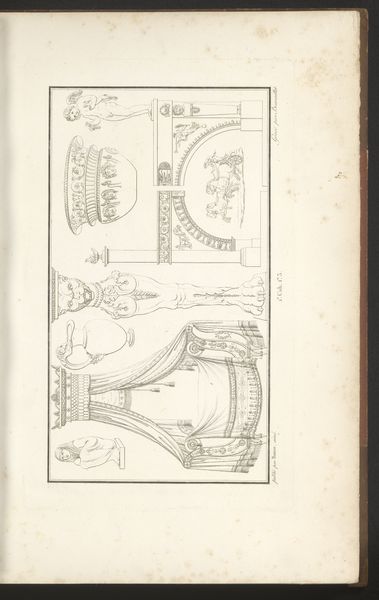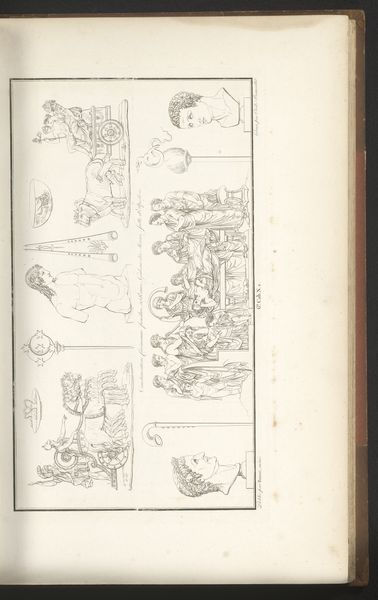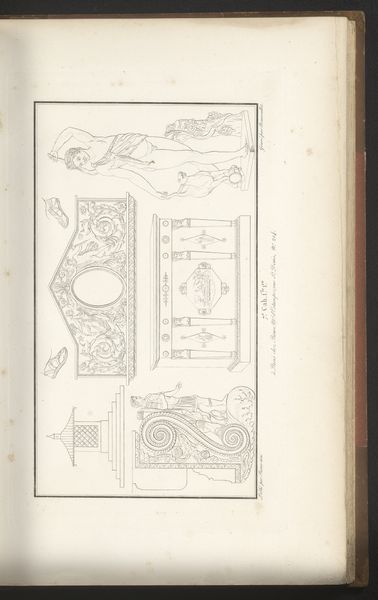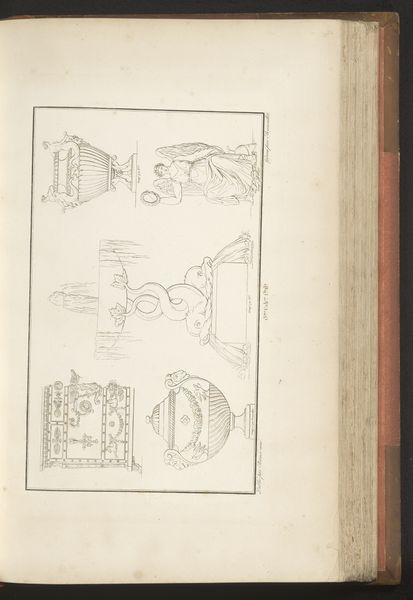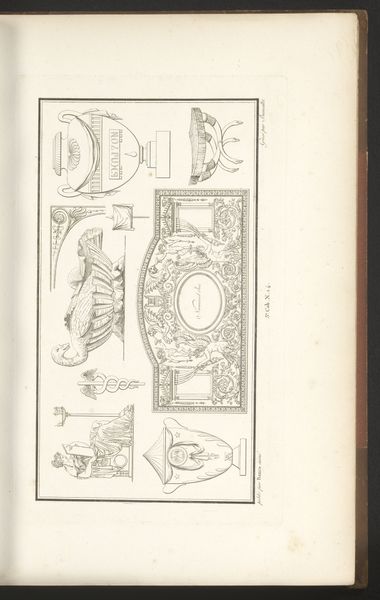
drawing, paper, ink
#
drawing
#
neoclacissism
#
classical-realism
#
paper
#
ink
#
geometric
#
line
#
decorative-art
Dimensions: height mm, width mm
Copyright: Rijks Museum: Open Domain
Curator: Welcome! Here we have “Diverse ornamenten,” a drawing made with ink on paper around 1820 by Cécile Beauvallet. What catches your eye? Editor: It's this wonderful catalogue of forms; I’m immediately drawn to the variations in weight of the line. Some elements are meticulously delineated, almost clinical in their precision. Other areas have a more sketched and airy quality. It's fascinating to see this juxtaposition within a single sheet. Curator: Absolutely. Beauvallet was working in the Neoclassical style, a movement which looked back to the art and culture of ancient Greece and Rome for inspiration. Publications such as this drawing circulated models that artisans used when producing high-end furniture. Editor: So, a pattern book, then. That totally shifts my perspective. The focus isn't necessarily on art for art’s sake, but rather art serving the practical function of design. Think about the skilled labor required to translate these 2D images into actual three-dimensional objects… the carving, the casting. Curator: Precisely! Consider also the aspirational nature of Neoclassical design during this period. It was a deliberate choice to associate with the perceived virtue and order of classical societies, reflecting the political and social ambitions of the elite. Editor: It speaks to this fascinating dynamic, though, between the fine arts and the decorative arts. These "ornaments," as the title calls them, straddle a boundary. How do we decide what's a functional craft versus a purely aesthetic art object? I am interested in understanding if this pattern-book became an exercise of control that impacted maker communities, but maybe not... Curator: These kinds of images were instrumental in establishing and disseminating Neoclassical tastes more widely, standardizing motifs while creating new opportunities for some craftspeople and industries but marginalizing others. The relationship between this plate and those objects and workers who created it are less obvious now. Editor: A powerful example of how images, even seemingly simple ornamental drawings, were actively shaping not only the material world, but also social hierarchies. That's a rich tension to consider as we appreciate the detailed craftsmanship here. Curator: Yes, understanding the forces and purposes at play when these "Diverse Ornamenten" were created opens our appreciation for both the ambition and contradictions embedded in the pursuit of classicism. Editor: I concur! It’s made me think a lot about the artistry that went into both this image, and its implications in workshops across Europe. I want to explore where this book landed; where did it enable the production of classical forms in the service of a broader market.
Comments
No comments
Be the first to comment and join the conversation on the ultimate creative platform.
